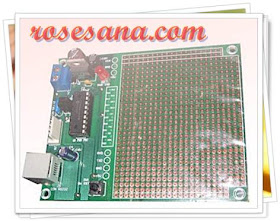ACOS7 - Ideal solution for Automatic Fare Collection (AFC)
ACOS7 is an “All-in-One Card” smart card which could address the requirements of Automated Fare Collection (AFC) applications and infrastructure projects worldwide is certified to be compliant with the Ministry of Construction (MOC) standard, a national “All-in-One Card” standard defined by the Chinese Government. It is ideal for the AFC market in China.Being ISO7816-4 compliance and supportive of PBOC e-purse and e-deposit transactions, ACOS7 can be applied to transportation, retail, property management, car parking, utility supply, etc.In addition, ACOS7 provides two interface options:
- Contactless interface
- Combi interface
Features:
- Contactless interface
- Full 8 Kbytes of EEPROM memory for application data
- Compliance with ISO parts 1,2,3,4; supporting the T = CL protocol
- Fully compatible with ISO14443A
- Data transfer rate supports106kbps, 212kbps, 424kbps and 848kbps
- Combi interface
- Full 8 Kbytes of EEPROM memory for application data
- Compliance with ISO 7816 parts 1, 2, 3, 4; supporting Transparent, Linear fixed, Linear Variable, Cyclic structures and supporting the T = 0 direct protocol
- High-speed transmission possible (9.6 to 115.2 kbps)
- Compliance with ISO 14443 parts 1,2,3,4; supporting the T = CL protocol
- Fully compatible with ISO14443A
- Data transfer rate supports 106kbps, 212kbps, 424kbps and 848kbps
- Common features among the two interfaces
- Compatible with Ministry of Construction (MoC) Standard
- Supports PBOC E-Purse and E-Deposit payment applications
- DES / 3DES capability
- Hardware based random number generator compliant to FIPS140-2
- Secure messaging ensures data transfer are confidential and authenticated
- Multilevel secured access hierarchy
- Supports Anti-tearing function
Application:
- Automatic Fare Collection (AFC)
- Retail card
- Car parking payment card
- property management
- Utility supply payment card
- Petrol card
- Loyalty card














































